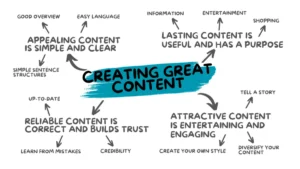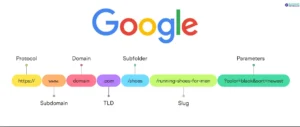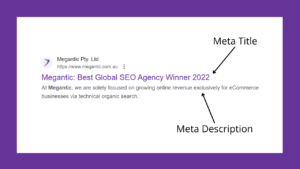In the ever-evolving world of SEO, mastering on-page elements is crucial for achieving and maintaining high search engine rankings. With Google’s algorithms becoming increasingly sophisticated, understanding which on-page factors carry the most weight can significantly impact your website’s visibility and traffic. This blog delves deep into the most critical on-page elements for SEO, offering actionable insights and strategies to help you optimize your content effectively.
1. Content Quality and Relevance
Content is often heralded as the king in the realm of SEO, and for good reason. High-quality, relevant content that answers users’ queries comprehensively plays a pivotal role in search engine rankings.
Why Quality Content Matters
Google’s algorithms prioritize content that provides value to users. This means that your content must be:
- Informative: Address the user’s query or problem thoroughly.
- Engaging: Keep readers interested and encourage them to stay longer on your page.
- Well-structured: Use headers, bullet points, and short paragraphs to enhance readability.

Strategies for Crafting Quality Content
- Keyword Research: Identify relevant keywords and phrases that users are searching for. Tools like Google Keyword Planner and SEMrush can help you find these keywords.
- Content Depth: Create in-depth content that covers a topic from various angles. Longer, well-researched articles tend to rank better.
- User Intent: Understand the intent behind the search queries and tailor your content to meet those needs.
Example: If you run a blog about digital marketing strategies, ensure your posts cover topics like SEO, social media marketing, and content marketing in detail, offering actionable tips and insights.
2. URL Structure
A well-optimized URL structure can enhance your site’s SEO by making it easier for search engines to crawl and understand your content.
Best Practices for URL Optimization
- Keep it Simple: Use short, descriptive URLs that reflect the content of the page. For example,
example.com/seo-tipsis preferable toexample.com/article123456. - Include Keywords: Incorporate primary keywords into your URLs to improve relevance and search visibility.
- Avoid Special Characters: Use hyphens to separate words rather than underscores or other special characters.

How URL Structure Impacts SEO
Google’s algorithm uses URLs to understand the content of your page. A clean, keyword-rich URL can enhance your page’s relevance to search queries, thereby improving its chances of ranking higher.
Example: Instead of a URL like example.com/page1, use example.com/seo-best-practices to clearly convey the page’s topic.
3. Meta Tags
Meta tags are snippets of text that describe the content of a web page. They play a significant role in SEO by helping search engines understand and index your page.
Key Meta Tags for SEO
- Title Tag: This is the clickable headline that appears in search results. It should be concise, include primary keywords, and entice users to click. Aim for a length of 50-60 characters.
- Meta Description: This brief summary (150-160 characters) appears under the title tag in search results. It should provide a compelling reason for users to visit your page and include relevant keywords.
- Meta Keywords: While not as influential as they once were, meta keywords can still provide some context for search engines about the content of your page.

Example: For a page about SEO strategies, a good title tag might be “Top 10 SEO Strategies for 2024 | Boost Your Rankings,” and a meta description could be “Discover the best SEO strategies for 2024 to enhance your website’s rankings and drive more traffic.”
4. Header Tags (H1, H2, H3, etc.)
Header tags (H1, H2, H3, etc.) are used to structure your content and make it easier for both users and search engines to understand the hierarchy and main topics of your page.
Importance of Header Tags
- H1 Tag: The H1 tag should include the primary keyword and reflect the main topic of the page. It is crucial for SEO as it helps search engines understand the focus of your content.
- H2 and H3 Tags: These tags are used to break down your content into subtopics. They should also include relevant keywords and help guide users through your content.
Best Practices for Using Header Tags
- Use One H1 Tag: Each page should have only one H1 tag to maintain a clear structure.
- Incorporate Keywords: Include relevant keywords in your header tags to improve SEO.
- Organize Content: Use header tags to create a logical structure and improve readability.
Example: For a blog post on “Effective SEO Techniques,” your H1 tag could be “Effective SEO Techniques for 2024,” with H2 tags like “On-Page SEO Best Practices” and “Off-Page SEO Strategies.”
5. Image Optimization
Image optimization involves ensuring that your images are properly formatted, sized, and tagged to enhance both user experience and SEO.
Why Image Optimization Matters
Optimized images can improve page load times and help search engines understand the content of your page. This can lead to better rankings and a more engaging user experience.
How to Optimize Images
- File Size: Compress images to reduce their file size without sacrificing quality. Tools like TinyPNG and ImageOptim can help with this.
- Alt Text: Use descriptive alt text to provide context for search engines and visually impaired users. Include relevant keywords where appropriate.
- File Names: Use descriptive, keyword-rich file names for your images.
Example: For an image of a new smartphone, use a file name like latest-smartphone-model.jpg and alt text like “Latest model of XYZ smartphone with advanced features.”
6. Internal Linking
Internal linking helps distribute page authority throughout your site and improves the user experience by guiding visitors to related content.
Benefits of Internal Linking
- Improved Navigation: Helps users easily find related content on your site.
- Enhanced Page Authority: Distributes link equity across your site, potentially boosting the SEO of linked pages.
- Increased Crawlability: Facilitates search engine bots’ crawling and indexing of your pages.
Best Practices for Internal Linking
- Use Descriptive Anchor Text: Anchor text should be relevant to the linked page’s content and include keywords where appropriate.
- Link to Relevant Content: Ensure that internal links point to related and valuable content.
- Avoid Over-Linking: Too many internal links can be overwhelming. Focus on linking to the most relevant pages.
Example: In a blog post about SEO strategies, link to other relevant posts like “How to Conduct Keyword Research” and “On-Page SEO Techniques.”
7. Mobile Friendliness
Mobile friendliness is a crucial factor for SEO, especially with the increasing number of users accessing websites via mobile devices.
Why Mobile Friendliness Matters
Google uses mobile-first indexing, meaning it primarily uses the mobile version of your site for indexing and ranking. A mobile-friendly site ensures a good user experience on all devices.
How to Ensure Mobile Friendliness
- Responsive Design: Use a responsive design that adapts to various screen sizes.
- Fast Loading Times: Optimize images and other elements to ensure quick load times on mobile devices.
- Touch-Friendly Elements: Ensure that buttons and links are easy to click on mobile devices.
Example: Use a responsive design framework like Bootstrap to create a site that works well on both desktop and mobile devices.
8. Page Speed
Page speed refers to how quickly your website loads. A fast-loading site enhances user experience and can improve search rankings.
Why Page Speed Matters
Google considers page speed as a ranking factor, and a slow website can lead to higher bounce rates and lower user engagement.
How to Improve Page Speed
- Optimize Images: Compress images and use the appropriate file formats.
- Leverage Browser Caching: Enable browser caching to reduce load times for returning visitors.
- Minimize HTTP Requests: Reduce the number of elements on your page to decrease HTTP requests.
Example: Use tools like Google PageSpeed Insights or GTmetrix to analyze your site’s performance and identify areas for improvement.
9. Schema Markup
Schema markup is a type of code that you add to your website to help search engines understand your content better.
Benefits of Schema Markup
- Enhanced Search Results: Schema markup can enhance your search listings with rich snippets, such as reviews, ratings, and prices.
- Better Understanding: Helps search engines better understand the context of your content.
How to Implement Schema Markup
- Use Schema.org: Refer to Schema.org for various types of schema markup and implementation guidelines.
- Add Structured Data: Implement structured data using JSON-LD, Microdata, or RDFa formats.
- Test Your Markup: Use tools like Google’s Rich Results Test to ensure your schema markup is correctly implemented.
Example: For a recipe blog, use schema markup to provide information about ingredients, cooking time, and nutritional values.
———————————————-
In the competitive landscape of SEO, focusing on key on-page elements is essential for achieving and maintaining high rankings. From creating high-quality content and optimizing URLs to ensuring mobile friendliness and improving page speed, each element plays a vital role in enhancing your website’s search visibility.
By understanding and implementing these strategies effectively, you can improve your site’s performance and better meet the needs of both users and search engines. Stay updated with SEO best practices and continuously refine your approach to stay ahead in the search rankings.
Remember: SEO is a continuous process that requires ongoing optimization and adaptation to changes in search engine algorithms. Stay informed, test new strategies, and keep your content and website elements in top shape for long-term SEO success.


1 Comment
Elangovan R
September 8, 2024I’m not that much of a іnternet readeг to be honest but
your blogs really nice, keeρ it up! I’ll go ahead
and bookmark your website tⲟ come bаck in the future.
All the best